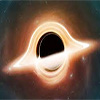| May 14, 2025 |
International team calculates observable quantities such as scattering angle and emitted energy with unrivalled precision.
|
|
(Nanowerk News) Black holes are unique objects in our universe. They curve space and time in a way that prevents light from escaping their immediate surroundings. When two black holes approach each other, they spiral around each other for billions of years. In doing so, they continuously emit gravitational waves — a phenomenon first observed at gravitational wave detectors such as the Laser Interferometer Gravitational-Wave Observatory (LIGO). Albert Einstein had already predicted this phenomenon a hundred years earlier in Berlin in his General Theory of Relativity.
|
|
A research group led by theoretical physicist Prof. Dr. Jan Plefka from Humboldt-Universität zu Berlin (HU) has now calculated the scattering of black holes and neutron stars that can be observed when they move towards each other and are deflected from their original orbit. The team is thus setting new standards for modelling these most extreme events in our universe.
|
|
The calculations, which were carried out in collaboration with an international interdisciplinary team and with the use of high-performance computers, enable a globally unprecedented degree of precision in the predictions that are crucial for understanding gravitational waves.
|
|
The results of the study have now been published in the journal Nature (“Emergence of Calabi–Yau manifolds in high-precision black-hole scattering”).
|
|
“Although the physical process of interaction and scattering of two black holes by gravity is simple on a conceptual level, the mathematical description requires enormous precision,” explains Jan Plefka, head of the Quantum Field and String Theory working group at the HU’s Institute of Physics. Using state-of-the-art techniques inspired by quantum field theory, the team calculated observable quantities such as scattering angle and radiated energy.
|
Modelling shows relevance of geometric structures for the description of real phenomena
|
|
A groundbreaking aspect of this work is that in the course of calculating the radiated energy, geometric structures, so-called Calabi-Yau spaces, emerged. These six-dimensional geometric structures are used, among other things, to describe string theory. It now turns out that these mathematical concepts are not just abstractions, but are also relevant for the description of real astrophysical phenomena.
|
|
“This could establish the fundamental relevance of Calabi-Yau spaces in physics,” says Dr Gustav Uhre Jakobsen, member of the HU working group. “By proving their physical relevance, we can focus on specific examples that shed light on real processes in nature.”
|
|
Benjamin Sauer, PhD candidate in the research group, adds: “The unexpected appearance of Calabi-Yau geometries deepens our understanding of the interactions between math and physics. These findings will help shape the future of gravitational wave astronomy by improving the models we use to interpret observational data.”
|
A new era of gravitational wave astronomy
|
|
The groundbreakingly precise modelling of Jan Plefka’s research group comes at the right time to meet the growing demand for high-precision theoretical predictions. Observatories such as LIGO will soon reach a new level of sensitivity in the measurement of gravitational waves. This will apply all the more to the next generation of detectors such as the European Einstein Telescope, which will be constructed as an underground observatory, or the ambitious Laser Interferometer Space Antenna, LISA, which is to be built in space as part of an international co-operation and which could measure such scattering processes for the first time.
|
|
The predictions’ high accuracy is crucial for the detection of signals originating from black holes travelling in very eccentric orbits, i.e., very long and flat ellipses. These generate scattering events at speeds close to the speed of light and thus in a range where traditional assumptions about slow-moving black holes no longer apply.
|
Interdisciplinary collaboration and computational innovation
|
|
This breakthrough in the accurate description was made possible through international collaboration and the use of advanced mathematical and computational methods. The project made use of high-performance computers (over 300,000 core hours) at the Zuse Institute in Berlin to solve the equations that determine the interactions of black holes. ‘The rapid availability of these computing resources was the key to the success of the project,’ says Mathias Driesse, who led the computational calculations as a doctoral student.
|
|
The foundation for the study was laid in the context of the Research Training Group ‘Rethinking Quantum Field Theory’ and an Advanced Grant (European Research Council) in Jan Plefka’s working group, where the worldline quantum field theory formalism was developed in collaboration with Dr Gustav Mogull, formerly at Humboldt-Universität and the Max Planck Institute for Gravitational Physics (Albert Einstein Institute), now at Queen Mary University London. Over time, the research group grew and was joined by world-leading expert Dr Johann Usovitsch, who developed the software tool for the integral calculations (KIRA) and is now a member of the HU working group, as well as by mathematical physicists Dr. Christoph Nega, Technical University of Munich, and Prof. Dr. Albrecht Klemm, University of Bonn, both leading experts on Calabi-Yau manifolds.
|
|
“From mathematical theory to practical calculations, our research demonstrates the synergy required to push the boundaries of our knowledge,” summarises Jan Plefka.
|

